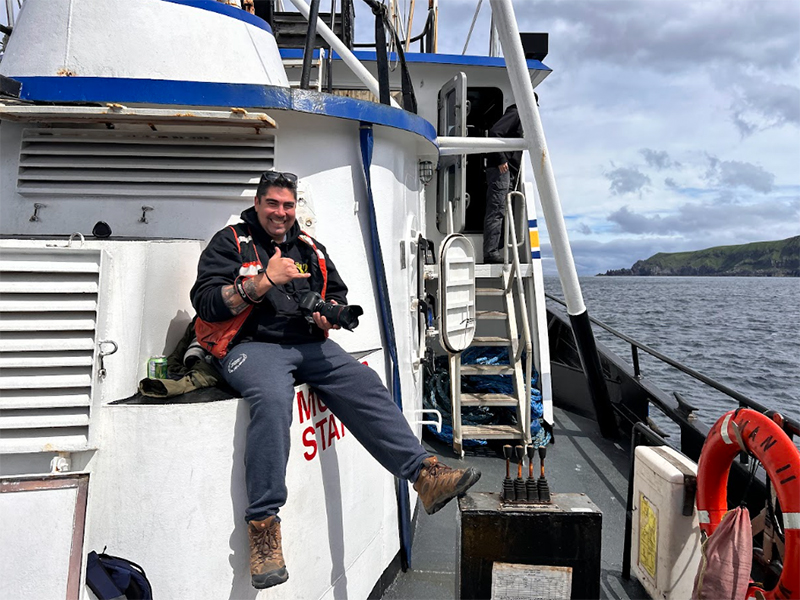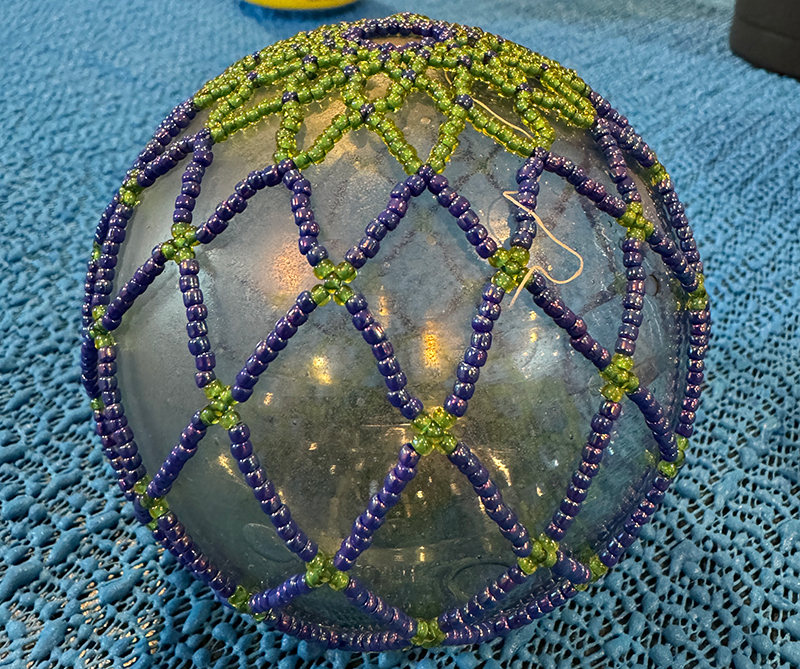Exploring Attu’s Underwater Battlefield and Offshore Environment
A Unangan Perspective: Reflections from Sean Mack
When I first heard about an opportunity to join an expedition to Attu to help look for World War II (WWII) shipwrecks, I wasn’t sure whether to believe it or not. I’d been interested in WWII since I was little. My Grandpa was in the Coast Guard during the war and patrolled the Strait of Juan de Fuca, protecting the Bremerton Shipyards. I’d grown up with stories of my family in Alaska who served in the Aleutians as shippers and pilots. If you wanted to visit what I consider my hometown of King Cove, Alaska, you had to fly first to nearby Cold Bay, where a large airfield was built during the war. In Washington state, I’d been to Fort Casey on a school trip and learned about the three forts that made up the “Triangle of Fire.” I played hide-and-seek at the bunkers of Fort Worden, another corner of the triangle, where I went on family trips. As an adult, I’d taken my own son to Fort Abercrombie on Kodiak where similar bunkers were built. I’ve worked on and visited Unalaska and Dutch Harbor, which were bombed during WWII, I’ve visited the lookouts on Mt. Ballyhoo, and have seen the pillboxes in town that are still there today.

I also love to travel and see new places, so the opportunity to visit the westernmost point in the United States (an island that by all means should be on the other side of the international date line), to look for WWII shipwrecks? Yes, I was interested. This expedition was also different from many of the other opportunities I’ve had to travel in Alaska for work. I wasn’t applying as an Alaskan archaeologist (my profession for the last 20 years), I was applying as a tribal representative. For one of the first times in my life, I wasn’t an archaeologist who was also an Alaska Native, I was an Alaska Native who was also an archaeologist. My primary responsibility was simply to be me and provide input to the project based on my personal experiences as someone who was from the greater Aleutian region. The fact I have undergraduate degrees in history and anthropology, and master’s degrees in anthropology and geographic information systems (GIS) were just a bonus. Trying to quantify my cultural qualifications was more difficult for me. I am a shareholder of the Aleut Corporation, the same regional corporation as the Attuans and their descendants, but I am originally from the Eastern Aleutians, a member of the Agdaagux Tribe of King Cove, 1,200 miles away. It is often difficult for indigenous peoples to quantify their indigenousness, to answer the question of what it means for oneself to be “Native.” I am sure there will be many people who question my Indigenous identity as a tribal representative: Do I have a high-enough blood quantum? Would my experiences growing up in the Eastern Aleutians be valuable in the Western Aleutians? At the end of the day, the opportunity was too amazing to let my own insecurities dissuade me from applying, and my application was accepted! I was going to Attu!
The project itself is incredible. The furthest west I had previously been was Unalaska Island; this time we would be flying an additional 450 miles to Adak, and then taking a 50-hour boat ride further west to Attu. I was curious about everything, so during the transit I spent as much time outside as possible watching the birds, looking for whales, trying to see if the mountains of the islands would peek out from the typical mist and fog of the Aleutians. When I was not outside, I found time to work on my beaded glass float, a modern Unangan form of art. Everything seemed somewhat familiar, but also a little different. I saw birds that are less common in the Eastern Aleutians such as albatross, but the landscape with the mountains coming straight out of the water was very recognizable. If you could take Attu and put it next to Unalaska, it would not look out of place.
Logistically, the challenges of working in the Aleutians can be a nightmare. Bad weather, which is common, can cause years of planning to go down the drain. If the seas were too high to deploy the sonar or remotely operated vehicle, you can’t just add a day: the boat had to head back to Adak on a set date, whether our work was done or not. Luckily everything seemed to come together perfectly. The seas around Attu were incredibly calm, and on the first day, an American cable laying vessel was located, along with submarine netting and many anchors. Being with people who had specific knowledge of the Battle of Attu made the expedition even more interesting. Looking at Attu from the boat and being shown the ridges that American soldiers had to climb to take Japanese positions made their sacrifices real to me. Seeing where the Japanese first landed on Attu, the hill they hiked to get to the village of Attu where they took the people as prisoners of war, made the history of the people who lived there tangible in a way that is difficult to describe. The people were not allowed to return following the war. With some individual exceptions, it was the last time they ever saw their homes.

I am sure it will take some time to reconcile the somber feelings that come from knowing what happened on Attu with the excitement of being a part of a project that is helping document its events, helping people remember what is often called the “Forgotten Battle.” People died on Attu. Japanese soldiers were ordered to dig in and die with honor. American soldiers who were equipped to fight in Africa were sent to the Aleutians with desert gear and asked to climb cold, wet mountains. The people of Attu were taken from their homes and spent the rest of the war in Japan; many didn’t survive. When the survivors returned to the U.S. following the war, they weren’t allowed back to Attu. At the end of the project, as we left Attu and started heading back west, it was close to midnight but the sun was still setting and the sea was flat calm. As the outline of Attu got smaller and smaller, I wondered how the Attuans felt as they left the island heading the other direction, and felt proud that I got to be a part of this project that is adding a chapter to the history of Attu, ensuring that people remember.
By Sean Mack
Published October 25, 2024